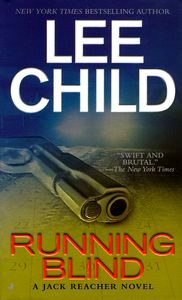Area 7, Matthew Reilly
St. Martin’s, 2001 (2003 reprint), 490 pages, C$10.99 mmpb, ISBN 0-312-98322-0
If ever Matthew Reilly’s publishers are scouring the web for snappy blurbs, here’s the best I can do: “Matthew Reilly is the mad man of thrillers.”
It’s even true.
Because other writers write thrillers as if they’ve got constraints to respect. Budgets. Logic. Physics. Reilly, on the other hand, thinks that none of those things should stand in the way of a kick-ass thriller. And seeing how much fun his novels are to read, it’s hard to disagree with him.
Area 7 alone, for instance, has a massive underground complex filled with government secrets, advanced airplanes, traitorous special forces, serial killers and Kodiak bears. That’s beautiful, and I haven’t even told you anything yet about a President of the United States whose heart is wired to an explosive charge, and the special game that pits the President’s secret service against a renegade bunch of racist military personnel. Do I really need to? This is a novel in which, for goodness’ sake, the protagonist escape to orbit midway through the story, and them come back down for more explosive action.
If you have already read some of Reilly’s other thrillers, you will find yourself at home: It’s got the same scope of imagination, the same madcap pacing, the same rush through mysteries and revelations. Any other writer feels like a poky geezer after Reilly’s thrill-a-chapter experience.
The similitudes to his other novels will be obvious. Not only does Area 7 feature protagonist Shane “Scarecrow” Schofield (who also starred in Ice Station), it also takes place in a generally confined environment like the eponymous Ice Station or the library of Contest. Like most Reilly novels so far, it features a lone hero acting alongside crack teams of opposing forces, plays along with high-tech weaponry and seems aimed more at jaded action movie fans than traditional thriller readers.
By the time our hero blasts off into orbit to duel with astronauts defecting to China and control a satellite that relays instructions to the President’s bobby-trapped pacemaker, (or something like that) it’s far too ridiculous to be taken seriously: even when it works, it works on a different level, one that takes place on the meta-fictional plane where author and reader are trying to one-up each other in a complex game of self-aware genre protocol redefinition.
Or maybe it’s just explosive slam-bang action throughout. At some point it’s exhausting to pick where earnestness stops and parody begins. Suffice to say that if Area 7 has a flaw, it’s the same one as Reilly’s other thrillers: By pummeling readers with non-stop action and ever-crazier developments, it runs the risk of exhausting its audience. Ironically, it’s page-a-minute speed freaks rather than slower, infrequent readers that may have bigger problems reading the book: Unlike other writers who pad their narrative with description and character moments that can be skipped on the way to the next plot point, Reilly dispenses with those uneventful stretches and so trips up readers who have made a habit out of skimming. He only gets detailed when writing an action sequence in which all the small details have to be aligned. Otherwise, it’s gunshots and explosions all the time.
It goes without saying that Reilly’s writing for a specific audience, and that this audience is considerably smaller than the total book-toting public. But his formula has become sheer performance art, and I can’t wait until I can read his next novel.














